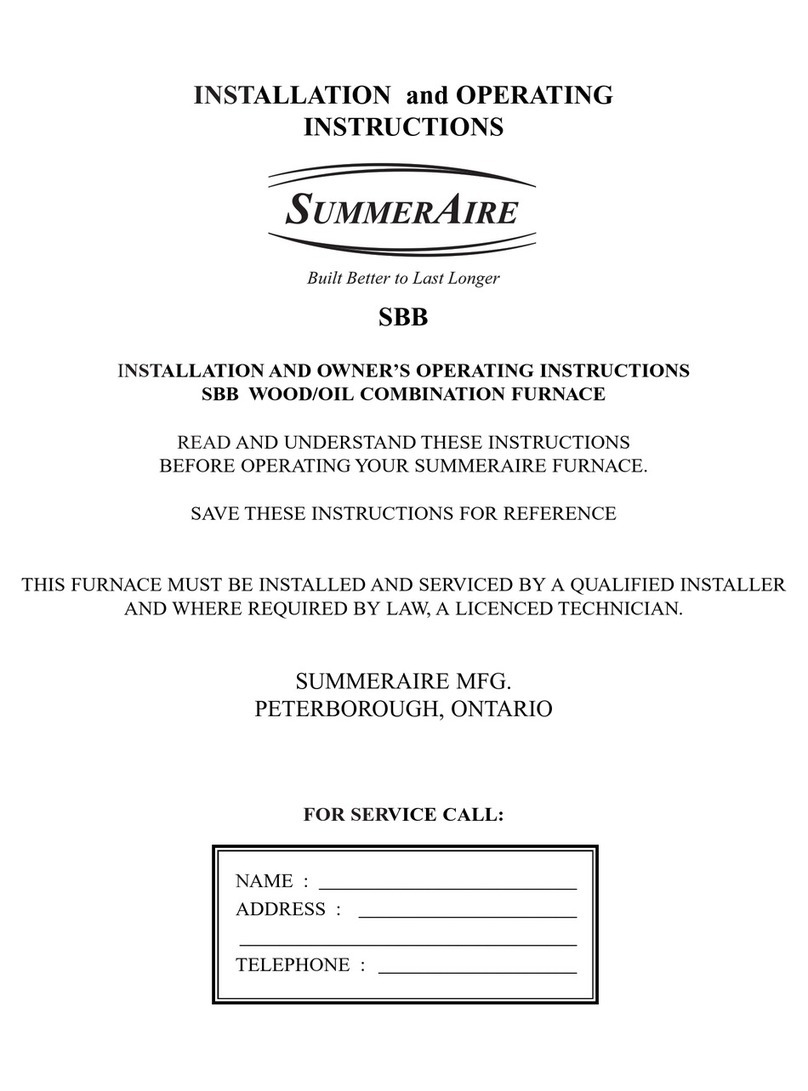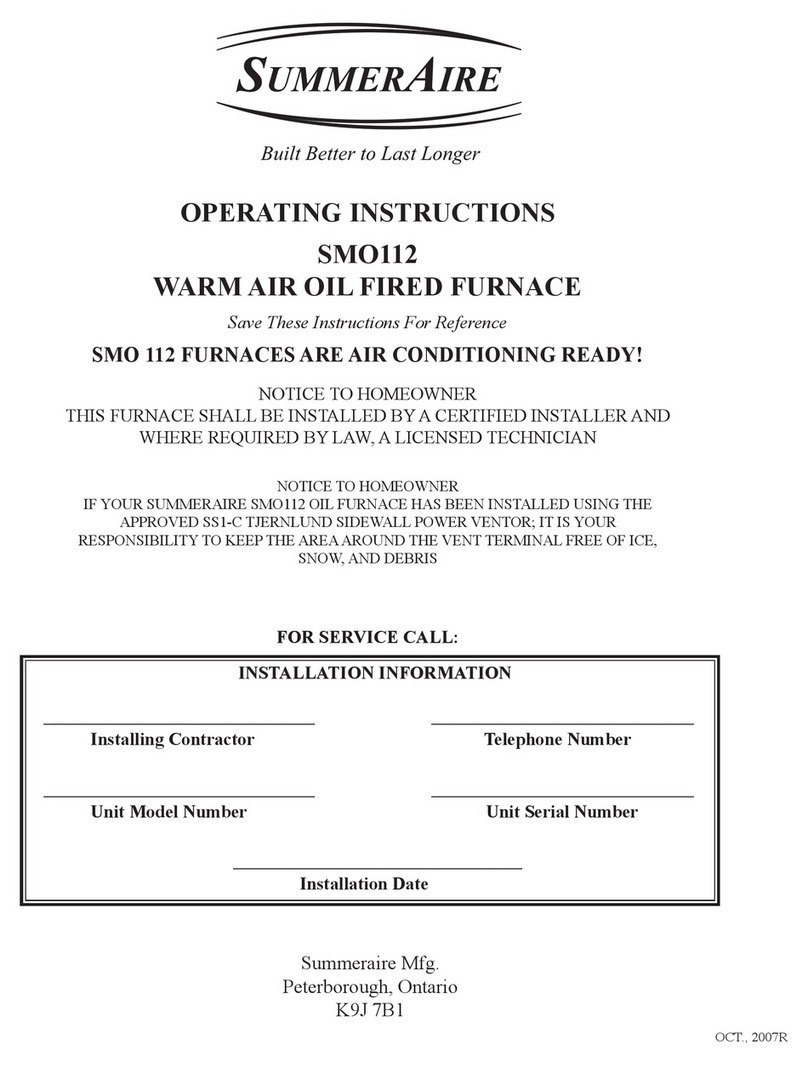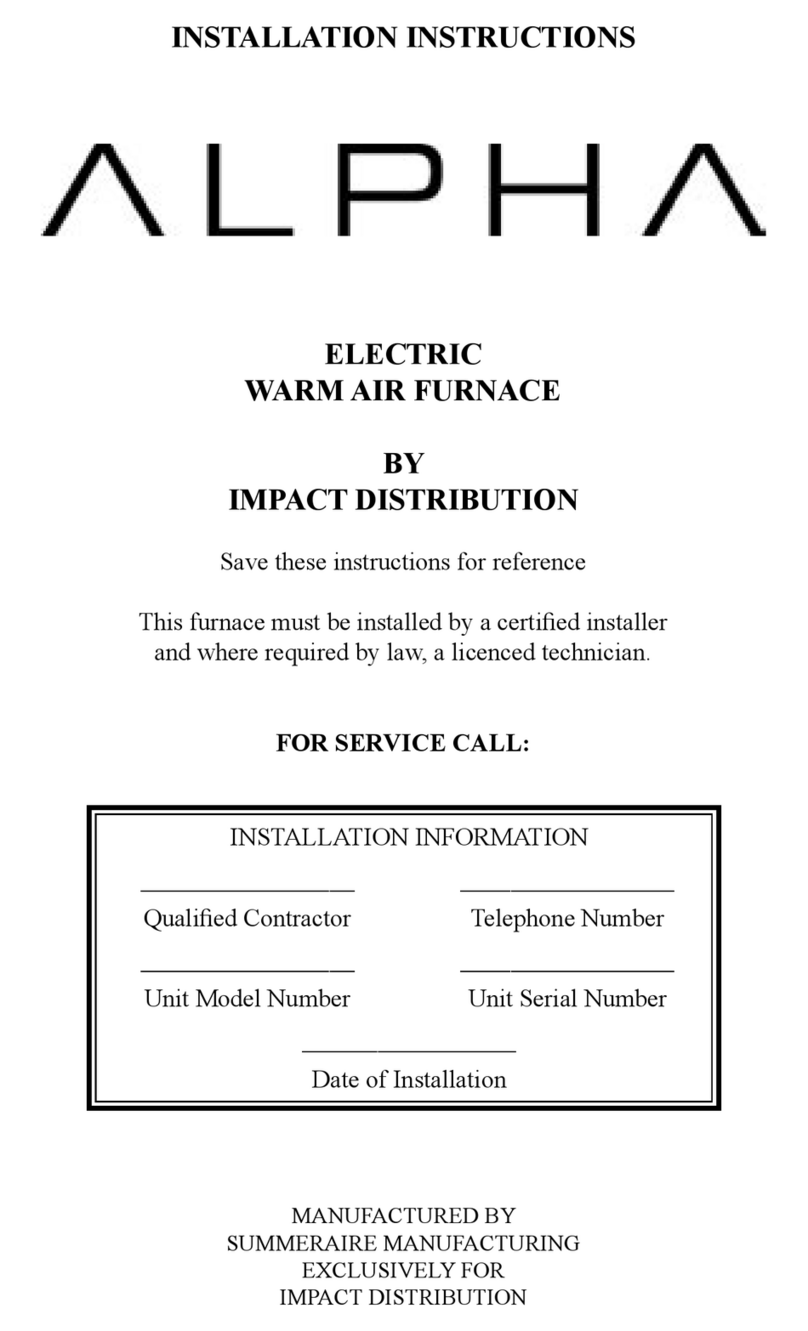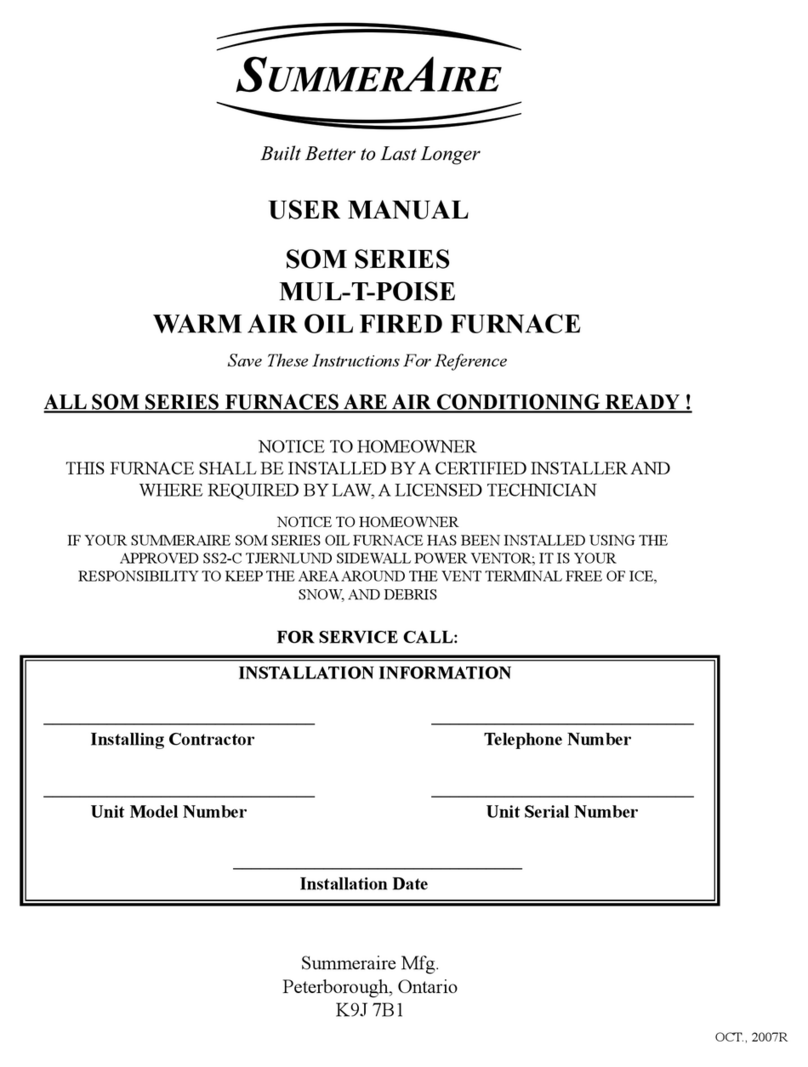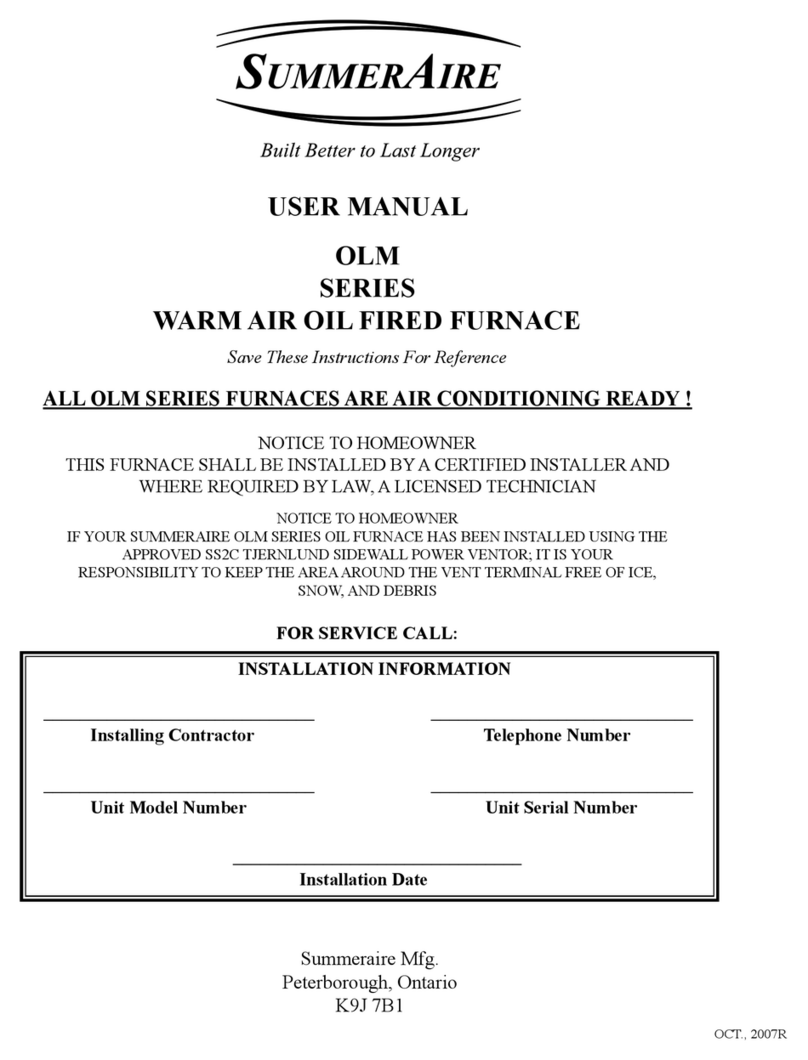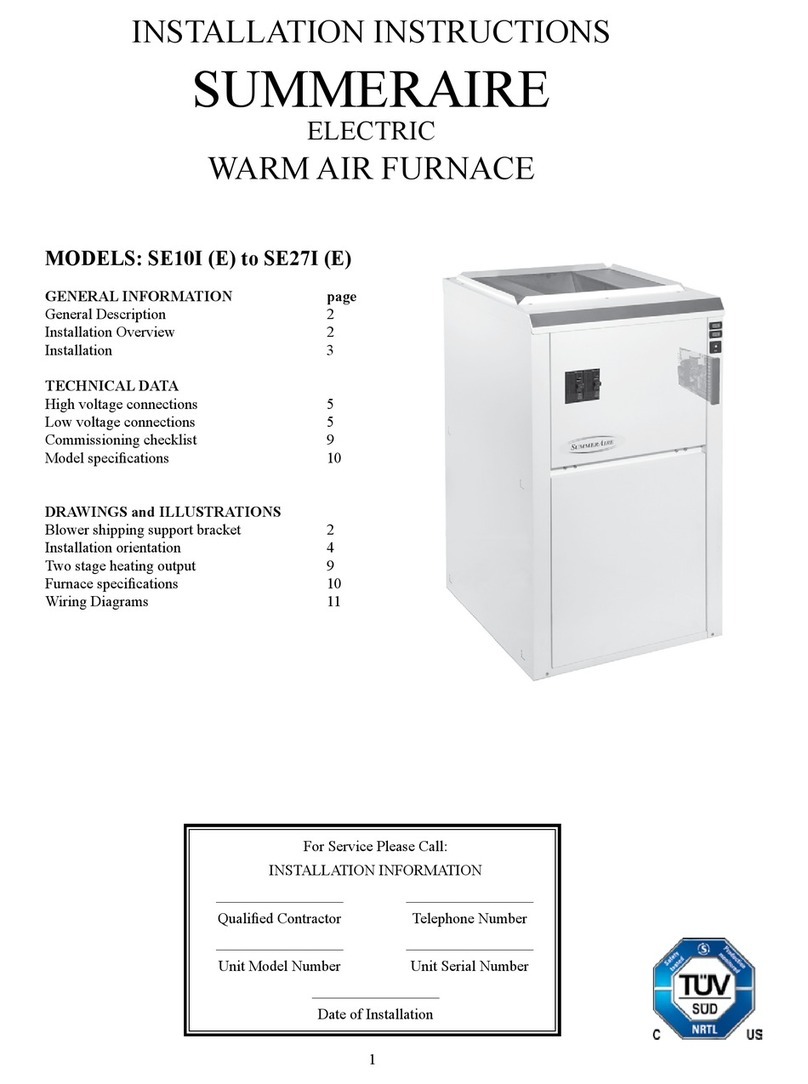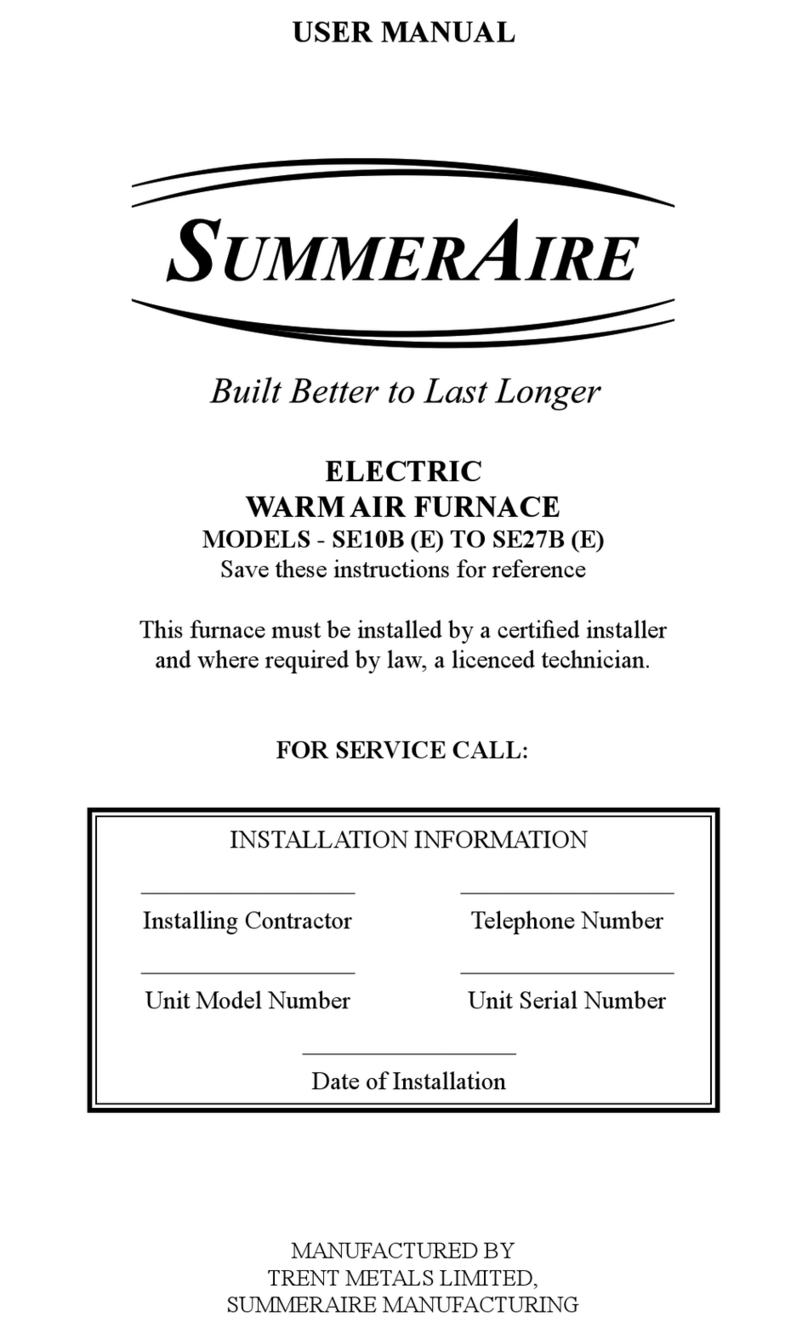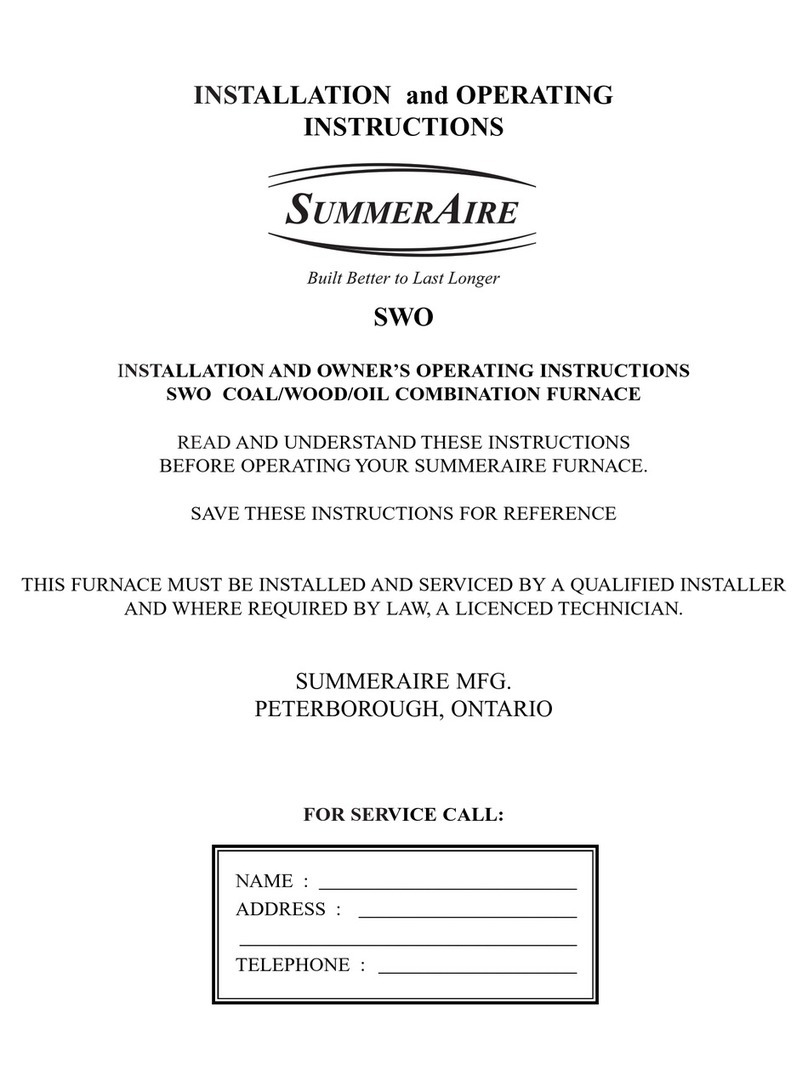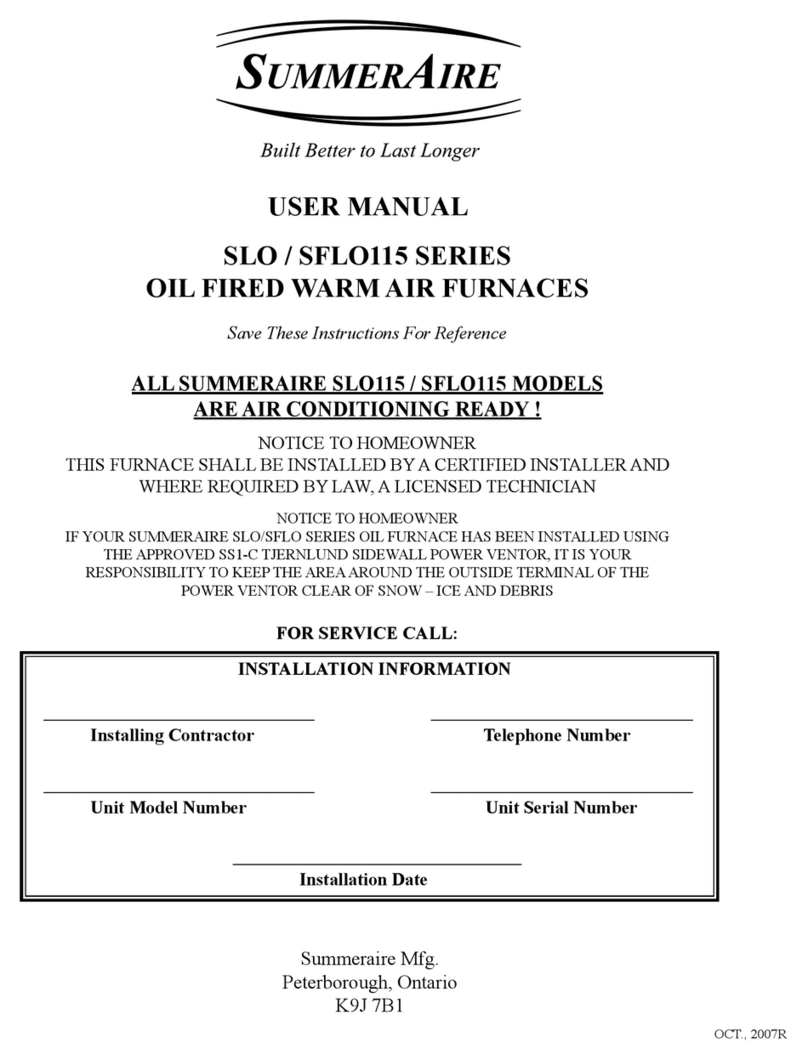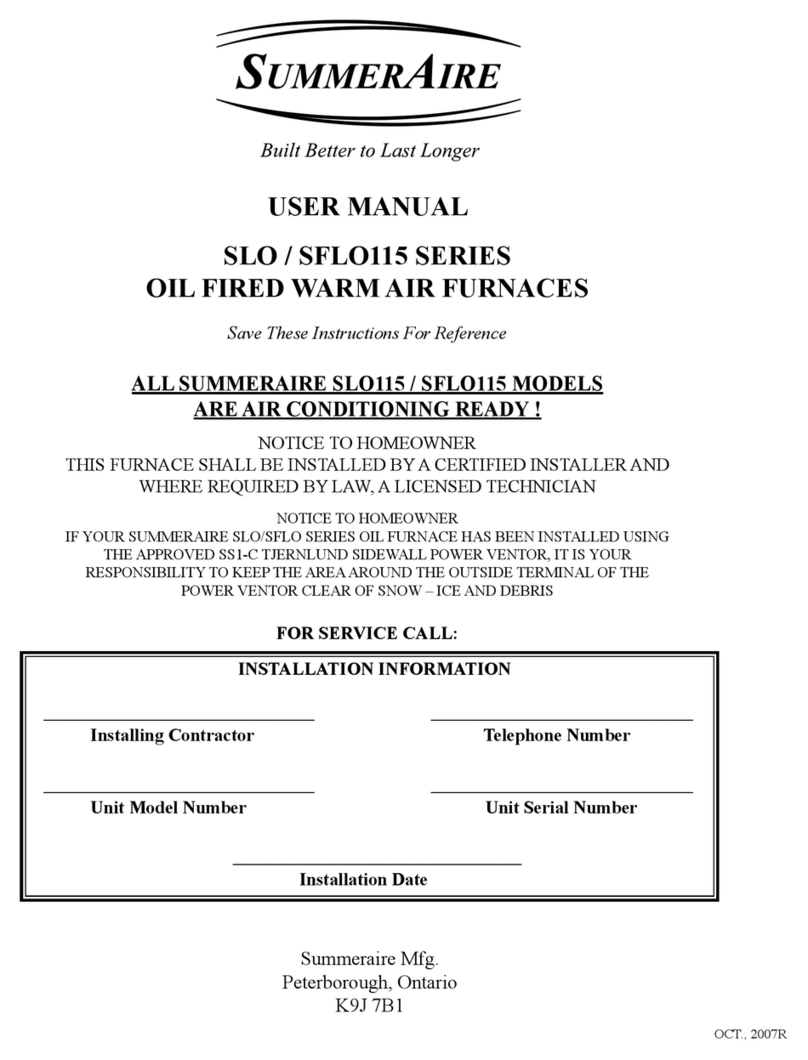Installation Instructions
Summeraire Model - RME 111
This furnace is to be installed by a qualified technician.
Some jurisdictions may require the installer to be
licenced.
General
Installation of oil fired heating units shall be in accor-
dance with the regulations of authorities having jurisdic-
tion and the current edition of CSA B139 installation
code for oil burning equipment.
The units are approved for fuel not heavier than No. 2
(furnace) oil. Do not use gasoline, crankcase oil, or any
oil containing gasoline.
Draft and Chimney Requirements
The chimney must be capable of producing a draft of
0.02 inches of water at the furnace flue pipe when the
unit is firing. The chimney should have a minimum height
of 20 feet and have nominal flue area dimensions of 8 x 8
inches. The chimney top should be at least 3 feet above
the point where it comes through the roof and must
extend two feet higher than any roof point within 10 feet.
In the case of a chimney which has been used previously
it is necessary to clean the flue before installing another
furnace.
Note: Due to the very high efficiency of the Riello Burner,
very low stack temperatures may be experienced.
Therefore, we recommend the lining of your chimney with
an approved flexible chimney liner.
Oil Tank and Piping
Maximum capacity of individual tanks used shall be 250
gallons and must be located at least 7 feet from the
burner. Local codes will govern the size of vents and
fillers as well as the type of caps used. 1 1/4 inches IPS
and 2 inches IPS are generally accepted as minimum
sizes for vent and fill pipes respectively. The burner oil
line shall not be less than 3/8 inches O.D. copper tubing
for runs of 50 feet or less and 1/2 inches O.D. copper
tubing for longer runs. A manual shut off valve and an oil
filter shall follow in sequence from tank to burner. Be
sure that the oil line is clean before connecting to burner.
The oil line should be buried and protected by cement to
eliminate any possible damage. Installations having the
fuel oil tank below the burner level must employ a two
pipe fuel supply system with an appropriate fuel oil
pump.
Installation of the furnace
Location
Locate the furnace as closely as possible to the chimney,
providing ample clearance to permit easy accessibility for
cleaning the inside of the furnace, the removal of filters,
blower, motors, controls and flue connections.
Combustion Air
In installations where the furnace is located in a small
room at least one square foot of air opening per gallon
per hour of oil burner capacity must be provided at both
the top and the bottom of the furnace room door. These
openings ensure an adequate supply of combustion air
to the burner.
Positioning The Unit
The furnace must be level in both directions for safe
quiet operation. Support each vee runner equally for uni-
form weight distribution.
Flue Connection and Draft Regulator
The connecting pipe from the furnace to the chimney
should be short and as straight as possible. The draft
regulator supplied with the unit must be installed in a
straight length of pipe no more than 18 inches from the
furnace flue exit pipe.
Wiring
All wiring from the service panel to this furnace shall be
made in accordance with the Canadian Electrical Code
and must also comply with all local ordinances.
Filters
The furnace should never be operated without filters.
This is especially true when temporary heat is required
during construction. In addition to permitting circulation
of dust and other suspended particles there is a possibil-
ity of bearing failure resulting from these foreign materials
in the blower and motor housings. Clean or replace filters
once each heating season.
Note: A dirty filter causes inefficiency and higher operat-
ing costs.
Burner Installation
Make sure your read and understand the enclosed
Burner Manual.
Install the burner to the pouch plate with the gasket pro-
vided.
No adjustment may be made to the burner mounting
position.
